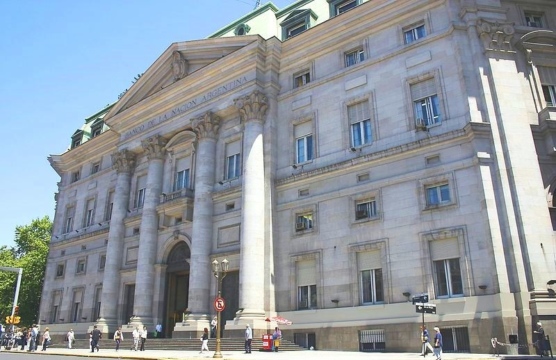China, India & Colombia’s Interbolsa
Colombian firm Interbolsa is being liquidated in a move to protect the interests of Colombia’s financial markets.
The US election is heating up, with fiercely contested primary elections for both the Republican and Democratic nominees. A range of energy issues have featured prominently in the discussions. In this blog post, we examine some of the top energy-related issues in the 2016 US presidential elections and what they mean for Latin America and the Caribbean.
The Iran deal has been a contentious issue in the United States since its inception. The United States, European Union and United Nations lifted some of the international sanctions on Iran earlier this year, after international inspectors found the country in compliance with its promises to eliminate large sections of its nuclear program.
A Democratic victory in 2016 will likely result in continued cautious support for the deal, provided that Iran complies with all aspects of the agreement. The Republican candidates all disapprove of the Iran deal, and if elected, could use executive authority to impose new sanctions or withdraw from the panels implementing the agreement. Some Republicans have vowed to revoke the deal immediately and levy new sanctions, while others have acknowledged this could alienate allies and would only be effective if other countries complied with new sanctions.
Iran’s oil minister has said that the country is ready to add 500,000 barrels per day (b/d) to output, and that number could increase to 1 million additional b/d later this year, adding to the oil supply glut and maintaining downward pressure on prices. Latin American oil producers have been hit hard by lower crude prices, which have shrunk government revenues and stalled economic growth in the region’s oil-dependent countries. Moreover, Latin America’s top oil exporters, Mexico and Venezuela, will compete directly with Iran, as all three countries produce primarily heavy crudes. Mexico and Venezuela have already been facing growing competition for a shrinking US market and have been forced to seek new export markets, particularly in Asia, where Iran is expected to market most of its exports. The oil price decline, however, has been an economic boon to the region’s net oil importers, particularly in Central America and the Caribbean.
The Renewable Fuels Standard, or RFS, requires a minimum volume of transportation fuel, heating oil or jet fuel in the US to be replaced with renewable fuels. Authorized in 2005 and expanded in 2007 by President George W. Bush, the RFS has already proven to be a hot-button issue in the 2016 presidential race.
Republicans are divided on the RFS. Ted Cruz supports an immediate end to the standard, while other Republican candidates, like Jeb Bush and Marco Rubio, have supported a more gradual end to the program. Donald Trump, drawing a contrast with other candidates in his party, supports the RFS and has called for regulators to increase required volumes of biofuels for blending. The Democratic candidates, Hillary Clinton and Bernie Sanders, both support expanding the RFS.
The RFS has four sub-categories of renewable fuels based on their percentage of greenhouse gas (GHG) reductions when compared to petroleum: cellulosic biofuel (60% GHG reduction), biomass-based diesel (50%), advanced biofuel (50%) and total renewable fuel (20%). Sugarcane ethanol from Brazil is classified as an advanced biofuel under the RFS because of its lower carbon intensity, and imports from Brazil help the United States meet the RFS’ advanced biofuel requirements, even though the United States is a net exporter of ethanol. The continued expansion of the RFS and increase in advanced biofuel requirements benefit Brazil. UNICA, Brazil’s sugarcane industry association, has formally supported the EPA’s increased biofuel requirements.
The proposed Keystone XL pipeline extension, an $8 billion project by TransCanada, would connect producers in Alberta to the US pipeline network in Nebraska. Supporters say it would create jobs and increase energy security, while opponents argue that the environmental costs both in Canada and the United States would far outweigh any benefits. Last November, President Barack Obama rejected the proposed pipeline extension. TransCanada has filed a federal lawsuit against the Obama administration, alleging that his rejection of the pipeline violates NAFTA provisions.
Support for the 830,000 b/d pipeline extension is split across party lines. TransCanada is considering filing a new application, and the election of a Republican president would make approval more likely, as all of the leading Republican contenders have stated their support for the pipeline extension. Both Clinton and Sanders have opposed Keystone XL.
Venezuela and Mexico, traditional heavy crude suppliers to the United States, stand to benefit from Keystone XL’s rejection. As the United States has imported increasing volumes of Canadian heavy crude in recent years, traditional Latin American heavy crude suppliers have lost market share. But Keystone XL’s rejection will force Canadian producers to use more inefficient, expensive and dangerous shipping methods, adding to the already costly production of tar sands oil, which has struggled in the low oil price environment.
In January 2015, the Interior Department announced plans to include 10 oil and gas drilling lease sales in the Gulf of Mexico, one off the East Coast of the United States and three off the coast of Alaska as part of its Draft Strategy for Offshore Oil and Gas Leasing Program for 2017-2022. Oil and gas companies and state officials have long sought to drill for oil and gas in the Atlantic’s outer continental shelf, which holds an estimated 3.3 billion barrels of recoverable oil. But environmentalists warn that drilling could devastate coastal economies on the Eastern seaboard. Drilling for oil in the Arctic has perhaps been even more contentious. In 2015, Shell was granted approval to start exploration in the Arctic, but low oil prices and unsatisfactory initial drilling results led the company to suspend activities indefinitely. Obama has since declared additional potential drilling areas in Alaska off limits for future oil and gas leasing.
The Democratic candidates have opposed drilling for fossil fuels in the Arctic and in East Coast offshore areas. In late 2015, Sanders introduced a bill that would ban offshore drilling in the Arctic and the Atlantic and end new and nonproducing leases for offshore drilling in the Pacific and Gulf of Mexico. Republicans have been more supportive of oil and gas drilling in general, and candidates Cruz, Rubio and John Kasich have come out in support of increased offshore oil and gas drilling. Bush’s energy plan says the government should defer to states that want to pursue offshore drilling, but as governor he opposed drilling in federal waters off the coast of Florida.
Opening new areas to exploration would presumably lead to higher US production, contributing to the global supply glut and low oil prices that have pummeled Latin America’s oil producers. However, offshore drilling takes years to produce results – it can take 5-10 years from the initial licensing of offshore blocks before commercial quantities of oil are produced. Long-term projections forecast a recovery in demand growth from China and other emerging markets and an increase in global oil prices, so by the time new US offshore oil comes onstream, the impacts on Latin America’s oil producers may be more muted.
Nearly 200 countries agreed to cut GHG emissions to combat climate change and limit the rise in global temperature at COP21 in December 2015. China and the US, the largest GHG emitters in the world, represent nearly 40% of the world’s GHG emissions, and US support and compliance is crucial if the deal is to have any significant impact on global carbon emissions. Support for the Clean Power Plan, which places federal limits on carbon emissions from power plants, is a key component of the US emissions reduction pledge.
The Democratic candidates have both released detailed plans for combating climate change, which include steps to reduce emissions and increase investment in renewable energy, and have spoken out in support of the Clean Power Plan. Clinton praised US negotiators for their work in establishing the Paris accord, while Sanders says the agreement is a milestone but doesn’t go far enough. Most Republican candidates, in contrast, have questioned the link between climate change and human activity. Many have condemned emissions regulations like the Clean Power Plan and climate change commitments as destructive to US economic growth and promised to eliminate them if elected. For now, whether the Clean Power Plan will proceed depends on the courts. Twenty-nine states, state agencies, industry groups and corporations have sued the government over the new regulations, and in early February the US Supreme Court issued a stay on the plan until the suit is reviewed by a lower court. The next president could also influence the ruling if he or she has the opportunity to select the Supreme Court justice replacing the conservative Antonin Scalia, who died on Saturday.
Implementation of the Paris accord is critical for Latin America and the Caribbean. The region is already experiencing some of the dangerous effects of climate change, including melting glaciers, bleached corals from warming sea temperatures and changing rainfall patterns. If national emissions reductions pledges are implemented, they could limit the forecast temperature rise to 2.7 – 3.0 degrees Celsius by 2100, but US non-compliance for the accord could jeopardize other countries’ participation. Many Latin American and Caribbean countries submitted ambitious pledges to reduce emissions, but technology transfer and climate financing from the United States and other developed nations will be essential to deliver on those pledges and implement climate change mitigation and adaptation strategies.
Colombian firm Interbolsa is being liquidated in a move to protect the interests of Colombia’s financial markets.
The Fernández administration’s refusal to comply with a US court order to pay holdout hedge funds has once again landed Argentina in default.
Who in China is advising on energy engagement with Latin America?

